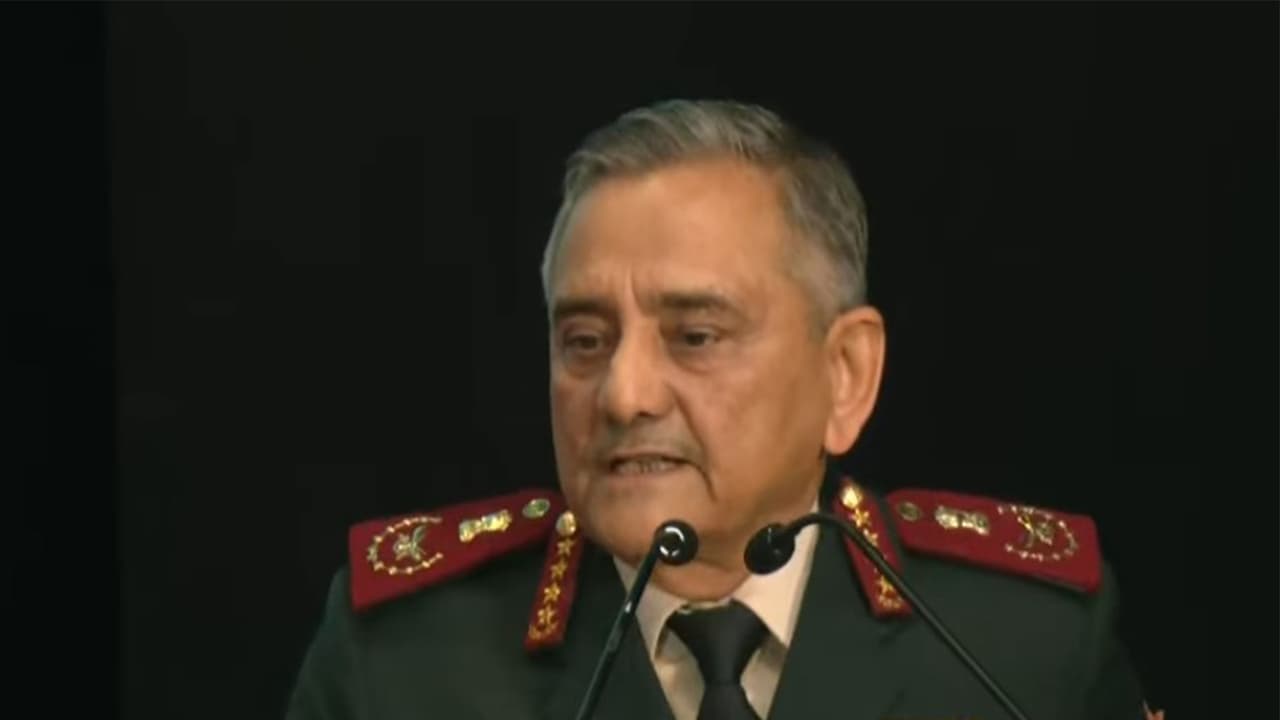At the Chanakya Defence Dialogue, CDS General Anil Chauhan said new warfare domains like cyber and space are making borders ‘porous’ and diluting sovereignty, emphasizing the need for multi-domain operations to secure Viksit Bharat@2047.
Evolving Nature of Warfare
New Domains and Porous Sovereignty
Chief of Defence Staff (CDS) General Anil Chauhan on Thursday addressed the Chanakya Defence Dialogue in Delhi, highlighting emerging trends in warfare. He noted that new domains such as cyberspace and space, as well as cognitive warfare, challenge traditional concepts of borders and sovereignty, making them “functionally porous.” The CDS cited “Operation Sindoor” as an example, demonstrating how modern weapons can target an adversary’s entire natural, network, economic, and information spaces. He emphasised that these trends will continue to shape the future of warfare.
Chauhan pointed out that these trends are evident in conflicts like Eastern Europe and West Asia, where borders are being redefined. He also mentioned claims over sovereign territories, such as Greenland, as examples of diluted sovereignty. “The new domains of warfare, like cyber, space, and cognitive domain. They all challenge the absolute concept of borders, territorial integrity, and even citizenship. So sovereignty has become functionally porous…These conceptual trends manifest in politics and wars, like what we are witnessing in Eastern Europe, and today, when we’re talking about peace talks, it’s about redefining borders over there. In West Asia, we see a similar trend, with even claims over the sovereign territories of other nations, like Greenland, being manifestations of it: a dilution of sovereignty. The next geopolitical trend which I see is a diminishing utility of conventional deterrence,” said CDS General Anil Chauhan.
Diminishing Deterrence and Multi-Domain Ops
The CDS emphasised the diminishing utility of conventional deterrence and the thin line between rhetoric and actual capability, which is causing instability in the global nuclear domain. He also highlighted the importance of multi-domain warfare, citing “Operation Sindoor”, which showed how national infrastructure is now a key aspect of warfare. “Thin boundary between rhetoric and demonstration of actual capability, causing instability in the global nuclear domain. The more we use the domain or the technology, the more lucrative it becomes to deny it to you by war or use of force. This will lead to the expansion of multi-domain operations, and domains will continue to expand as human beings become more accustomed to ever more technologies and domains. Call it a natural progression or law of inevitability, but multi-domain operations will become part of human life. Cyber, media, etc,” added Gen Chauhan.
Chief of Defence Chauhan highlighted the evolving nature of warfare, stating that the increasing use of technology and domains makes them more vulnerable to denial through war or force. He emphasised that multi-domain operations will become a natural part of human life as technology advances.
Non-Linearity and Expanded Battle Space
Chauhan noted that warfare is no longer confined to traditional domains like land, sea, or air, but will be conducted simultaneously across multiple domains, including cyber and media. He identified two key trends: the expansion of battle space and non-linearity, which have collapsed traditional notions of front, intermediate, and depth. “Warfare is no longer confined to land, sea or air; it should be conducted simultaneously across all these domains, which I am talking about, which will be identified and, of course, they will keep emerging as we get used to new domains and new technologies in the future. The second trend which I notice is non-linearity and the expansion of the battle space. Non-linearity had existed in the past as well, but today it is acquiring a new meaning with the spatial aspect in the expansion of the battle space; the old notions of front, intermediate, and depth have completely collapsed. Almost the entire natural space, its network, economy, and information space of the adversary actually lies within the reach of today’s modern weapons, and Operation Sindoor was an example of it,” he added.
Future of Warfare and Military Revolution
In the end, General Anil Chauhan underscored the unpredictable nature of time and warfare as echoed in Chanakya’s wisdom and principles. He highlighted how technology is diminishing geography’s role in strategy, ushering in a revolution in military affairs through the convergence of AI, hypersonics, robotics, autonomous systems and sensor-driven battlefield transparency. Geopolitically, eroding sovereignty, rising force propensity and nuclear proliferation signal a volatile future, demanding armed forces evolve doctrines for multi-domain operations. Emphasising intellectual honesty and self-enemy knowledge, Gen Chauhan stressed that victorious commanders apply strategy flawlessly, preparing soldiers who train unlike daily practitioners for catastrophic-stakes conflicts to secure Viksit Bharat@2047.
Chanakya Defence Dialogue 2025
Chanakya Defence Dialogue 2025 commenced today at the Manekshaw Centre, New Delhi, bringing together military leaders, global strategic experts, diplomats, industry leaders and young scholars. President Droupadi Murmu graced the inaugural session today, with Gen Upendra Dwivedi, Chief of the Army Staff, delivering the Keynote Address.
Organised by the Indian Army, in collaboration with the Centre for Land Warfare Studies, the Dialogue centres on the national vision of Sashakt, Surakshit and Viksit Bharat. It examines India’s security challenges and technological frontiers in an increasingly contested global landscape.
The Second day of the Chanakya Defence Dialogue will centre on a high-level special session led by Defence Minister Rajnath Singh, who will unveil key initiatives and deliver a major address on defence reforms for a Sashakt, Surakshit and Viksit Bharat. The day will then proceed to thematic sessions.
Across two days, the Chanakya Defence Dialogue 2025 aims to create a comprehensive platform for strategic deliberation on India’s future security architecture. The Dialogue underlines that India’s strategic transformation will be driven by moral clarity, technological excellence, deeper self-reliance and a whole-of-nation approach. (ANI)
(Except for the headline, this story has not been edited by Asianet Newsable English staff and is published from a syndicated feed.)
